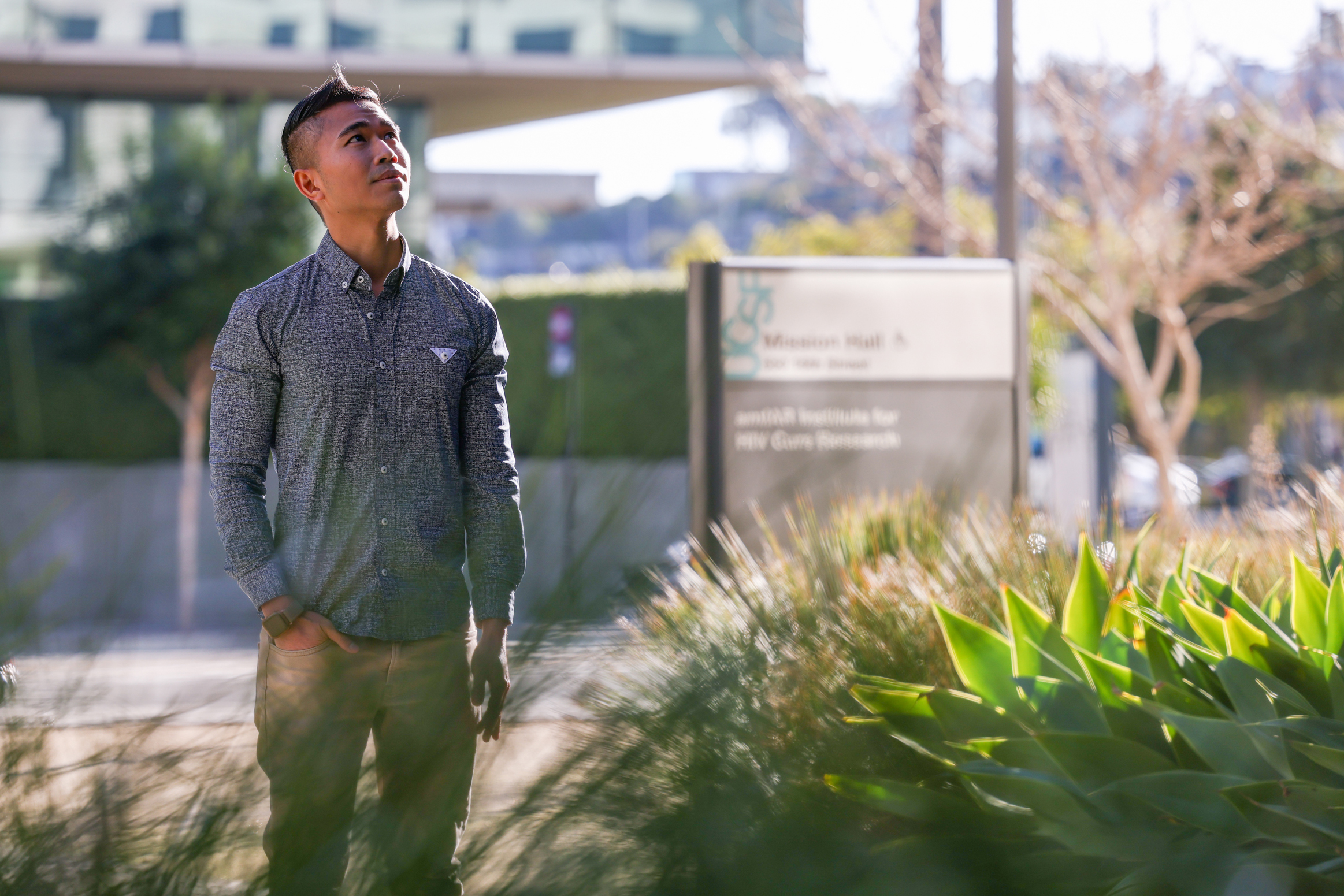At 51 years old, Ed Center says he left his “young gay party phase” in the rearview mirror long ago. But when Covid struck, he grasped for a way to deal with the stress.
“I needed to numb,” Center said. “So that’s the point where I developed a ‘bottle of wine a night’ habit.”
But Center wanted to support his two children as they went through their own pandemic-era struggles, and that was harder to do after a couple drinks. He tried to make a change.
“I would not have any alcohol in the house on purpose, and then something stressful would happen, and I would go to the supermarket and grab a bottle,” Center said.
That’s when he learned that a local researcher was looking for queer Bay Area men to participate in a study experimenting with a new way to treat mild or moderate alcohol use disorder, a condition more commonly known as alcoholism. He decided to sign up.
Historically, the conversation about medical treatment for people suffering from alcohol use disorder has focused on the most severe cases. But the vast majority of people who binge drink have a more moderate form of the condition, explained researcher Glenn-Milo Santos, professor of community health systems at the UCSF School of Nursing and author of the local study.
And moderate binge drinkers can still experience significant negative health impacts from their alcohol use, not to mention the increased risk of booze-fueled accidents.
“So thinking about a different treatment paradigm [for moderate drinkers] was something I thought was lacking,” Santos said.
The UCSF researcher wanted to see if he could find a way to help binge drinkers who want to cut back, but don’t have such a bad problem that it reaches the severe threshold. He also wanted to focus his research on queer men, a demographic group that, saddled with the stress of facing homophobia and transphobia, binge drinks more often than the general public.
Naltrexone is a medication that reduces the amount of dopamine released by a person’s body after they drink alcohol. In effect, it muffles the euphoric high that comes along with tipsiness, reducing the urge to reach for that next drink.
Typically, doctors have prescribed the drug as a daily dose, which is effective for heavy drinkers who get drunk throughout the week. But Santos thought that people with irregular binge drinking habits might be more interested in using the medication on an as-needed basis—for example, as a way to make sure they don’t overindulge at a work holiday party.
So Santos and his team recruited 120 people like Center: queer men living in the Bay Area who were open to taking naltrexone when they thought a period of binge drinking might be approaching.
The study, which was published in The American Journal of Psychiatry last October, bore out Santos’s theory: Taking Naltrexone as needed was effective at reducing binge drinking in the study’s participants.
Santos’s work is part of a growing movement in the field of addiction treatment to offer people care as soon as their substance abuse starts to cause problems in their life.
“Far too often, the expectation is that someone must hit ‘rock bottom’ before treatment can work,” Nora Volkow, director of the National Institute on Drug Abuse, wrote in a release last summer. “But this is a myth that can have dire consequences.”
Center says he definitely sees the queer men in his life binge drink more than other demographic groups.
“The gay bar and the gay party have forever been places of safety and community,” he said. “It’s great, but it revolves around alcohol.”
The historical heart of San Francisco’s queer culture, the Castro, is one of the city’s binge drinking hotspots, according to a recent report by the Centers for Disease Control and Prevention (CDC).
Since the study was “double blind,” Center isn’t sure whether he received naltrexone or a placebo. Either way, participating in the project required him to closely track his alcohol consumption, which brought Center a new awareness about his drinking and helped him to cut back.
Even now that the study is over, he says he’s much happier about his relationship with alcohol. He’s cut down on the solo “numbing” drinking, but is still able to enjoy going out for social cocktails.
A major support has been a group of his friends who use an app to keep track of their drinking and have valuable conversations helping one another understand what calls them to drink in the first place.
“I think there is a cultural zeitgeist happening right now where people are looking to cut back on their drinking [so they can] drink consciously and responsibly without giving up alcohol completely,” Center said.
